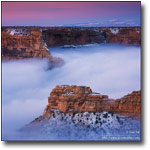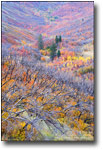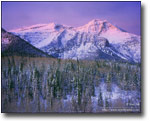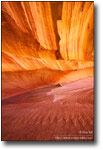 |
 |
||||
Art is the affirmation of life. It has always been my belief that the role of the artist is to enrich the human experience by standing up to desperation, cynicism, and drudgery; to offer a small dose of relief for those in the throes of depression, anguish, or plain boredom. A little bit of art goes a long way. A momentary glimpse of blissful beauty and reinforcement of goodness can sustain the human spirit through unimaginable strife. I say this as perhaps the primary consumer of my own art and for the same reasons. "They" say everyone is a critic. This includes artists as well, critical of their own work and the works of others. By virtue of being human members of a society, all artists also possess political, social, and environmental views that they often attempt to promote in their art. This blurring of the lines and often conflicting motivations as one plays artist, critic, and activist at the same time can often be a source of frustration and may even be detrimental to any individual pursuit. Though I have written about the role of the artist before, I rarely considered the constellation of roles I often find myself play, though it can often be a demanding balancing act. As I examine my own creative experience or attempt to make sense of the feedback I often give and receive, alongside personal goals I wish to convey in my work, some questions and doubts arise. Critics (in the negative sense) of nature photography are hardly a rare breed. Even within the discipline some consider themselves more enlightened and progressive than others. This is true for most any discipline: those who are not confident enough in their workís ability to stand on its own merit - and those of lesser talent - often attempt to define their value by berating or trying to invalidate that of others. In my mind it is this mentality that anything original or shocking is necessarily superior to a more common perception that yields some bewildering attitudes. Appreciation of beauty is as much a natural part of the human experience as appreciation of good food, pleasant scents, or soft touch. We might treat those who proclaim a love of foul smells with disdain and suspicion, yet those who dismiss primal beauty are for some reason immune from this perception. But I digress... As photographers we are often judged not only by the appeal of our images, but are further subject to critiques of our medium. Most recently I heard critics decry images of beautiful natural subjects bemoaning the romance, the beauty, and the magic with a whiny "it doesn't really look like that in reality", to which the obvious response is "does it really matter?" Neither art nor beauty has ever demanded a direct documentary correlation with actual objects or events. Some might say that such a connection is an inherent quality of photography though this is quite nonsensical. For once it places more importance on the medium than the work which is clear indication the critic is prejudiced. Second, anyone with any degree of photographic skill knows full well that the camera can lie as readily as the pen or the paintbrush. Art is not about the credibility of the medium; it is about the expressive powers of the artist. Photography as a medium is a form of language, capable of communicating an array of messages. A lie in English is a lie in French is a lie in Mandarin Chinese is a lie in painting is a lie in photography. Veracity has little to do with the value of art. Is a photograph made with a graduated neutral density filter any more a lie than Daliís melting clocks or Escherís endless staircase? We all know that art is not truth. Art is a lie that makes us realize the truth. As a non-sequitur, in many such suspect "unreal" cases the fact is "it" actually did look "like that" in reality, though finding it in such an ideal state required great dedication, physical effort, and no small amount of luck. Ask any photographer who had been fortunate to witness such miraculous moments and more often than not they will tell you they were there alone, or in very sparse company, and in practically all cases - the ignorant critic was not present to testify what it did or did not look like. Perhaps even more insidious is the proclamation that idealizing natural places (if indeed capturing a rare and fleeting moment of beauty can be considered idealization) does them harm in some way by creating unrealistic perceptions of their beauty. The threat to these places comes not from artists inspired by their visual majesty but rather from the complacency of those too jaded or too ignorant to comprehend their spiritual value, from short-sighted or misguided public policies, and from a general perception that they are not worth preserving in their native state. In this sense an artist attempting to capture a moment of beauty in a threatened landscape is no different than a firefighter rushing into a burning inferno to save the family dog. Neither expects their action to undo the greater damage but both are making a stand for what is good and right and for the caring altruistic spirit that makes us human. So what value is there to critics? In my opinion: immense. Critics are the proverbial mirror holding our work, warts and all, in front of our faces and forcing us to come to terms with it. Some parts of the mirror may simply reflect what we already know is there, others may be optical flaws in the mirrorís surface and others still may present and magnify things the artist has consciously (or not) failed to accept. It is up to us to determine how to respond, though whether we like it or not - it is a reflection of our work and we must acknowledge it so that we may learn the impact and consequences of what we do. It is a foolish artist who does not give due consideration to any and all feedback before deciding whether to dismiss or accept it. So what about those who belittle all beauty and see no worth in idealism? Ansel Adams wrote that "the curse of all art is the patina of sentimentality" and some people consider such sentimentality to be gratuitous or meaningless, an easy target for a cheap shot, or an admission of weakness. Oh, how easy it is to cast rocks, to sling mud, to belittle, and to mock. It can easily work both ways. Consider the following decidedly self-indulgent paragraph: And then, well then there are those who have become so mired in their artificial world that they not only accept its destructive ways but actually sympathize with them. Itís the ultimate surrender of a creative soul under siege. These artists seek to celebrate decay, to abstract poverty and strife into pleasing compositions, to find beauty in scarred earth and industrial wasteland, to render man-made destruction in visually pleasing lines and colors so their actual meaning becomes obscure or irrelevant, and to glorify acts of war and oppression in what can only be explained as the artistic manifestation of a Stockholm syndrome. The consumers of such creations can make for an interesting psychological study in cognitive dissonance. How else can one reconcile looking at an image of a starving refugee or a clear-cut forest while limiting the impression to terms of tonality and composition? I admit it - it feels good. Score one for the under dog. I was perfectly willing to continue spouting fire and brimstone and to vent my frustrations for as long as I can have your attention. But ultimately I concede it achieves little in promoting my message or my art. It is here that I stop to think about activism. This is no longer about the esthetics of my images but about the subjects portrayed and about my wish to influence change in the world. This is no longer about me as an artist - it is about me as an activist. What I have only come to realize in recent times is how different these roles are. For the longest time I regarded both in the same light: different ways of striving to "do good" as an individual. I now question whether they are indeed the same. In fact I now believe they are so different that I question the ability of anyone, least of all myself, to sustain both in one person. Where an artist dwells in the emotional and the spiritual, the activistís realm is politics and strategy. Each discipline requires its own unique talents and rarely does one individual excel at both. Is my (admittedly un-PC at times) activism hurting my credibility as an artist? Should I stick to what I do best rather than risk tainting one calling with another? It may be that one of the worst things an artist can do for himself is to become involved in the political and internal struggles of the organizations involved. Where I go from here, I am not sure. Though I am still as convinced as ever in my mission to create, preserve, and promote what I consider good and beautiful, it may be time to define myself as either artist or activist, but maybe not both. Which do I give up? Which would you give up? One thing remains certain - artists or activists - we will all continue to be critics... and their targets. GT-NPN 0440 Comments on NPN landscape photography articles? Send them to the editor. Guy Tal resides in Utah, where most of the Colorado Plateau's breathtaking grandeur can be found, and where issues of preservation and land-use are among the most prominent on the political agenda. Guy's large format photography can be viewed on his website at http://scenicwild.com. | |||||
|
|
|||||



